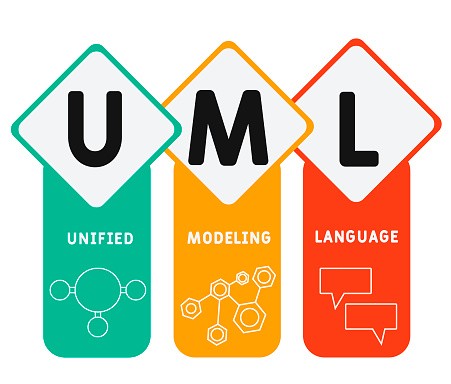
What is UML(Unified Modeling Language) ?
Good Morning Linkedin fam!!!!
I'm back with another interest and informative article i.e. What is UML?.
As I have noticed that how important to have knowledge about UML in order to build and develop projects as UML diagrams can be used as a way to visualize a project before it takes place or as documentation for a project afterward. So, I just wanted to share the knowledge that I have about UML with you all .Come on lets go into the article...
What is UML?
Unified Modeling Language (UML) is a general purpose modelling language. The main aim of UML is to define a standard way to visualize the way a system has been designed. It is quite similar to blueprints used in other fields of engineering. UML is not a programming language, it is rather a visual language.
OOPs concepts in UML...
The Unified Modeling Language (UML) is a language used in the field of software engineering that represent the components of the Object-Oriented Programming concepts. It is the general way to define the whole software architecture or structure.
In Object-Oriented Programming, we solve and interact with complex algorithms by considering themselves as objects or entities. These objects can be anything. It can be the bank or a bank manager too. The object can be a vehicle, animal, machine, etc. The thing is how we interact and manipulate them that they can perform tasks and they should.
The tasks can be interacting with other objects, transferring data from one object to another, manipulating other objects, etc. The single software could have hundreds or even thousands of objects. So, UML provides us a way to represent and track those objects in a diagram to become a blueprint of our software architecture.
- Objects: Represent an entity and the basic building block.
- Class :Blue print of an object.
- Abstraction: Behavior of a real world entity.
- Encapsulation : Mechanism of binding the data together and hiding them from outside world.
- Inheritance : Mechanism of making new classes from existing one.
- Polymorphism: It defines the mechanism to exists in different forms.
What are UML diagrams?
UML is linked with object oriented design and analysis. UML makes the use of elements and forms associations between them to form diagrams. Diagrams in UML can be broadly classified as:
TYPES OF UML DIAGRAMS:
1.Structural Diagrams – Capture static aspects or structure of a system. Structural Diagrams include: Component Diagrams, Object Diagrams, Class Diagrams , Deployment Diagrams , Composite structure Diagrams and Package Diagrams.
- Component Diagram: Displays the structural relationship of software system elements, most often employed when working with complex systems with multiple components. Components communicate using interfaces.
- Object Diagram: Shows the relationship between objects using real world examples and illustrates how a system will look at any given time. Because data is available within objects, they can be used to clarify relationships between objects.
- Class Diagram: The most commonly used UML diagram, and the principal foundation of any object-oriented solution. Classes within a system, attributes and operations and the relationship between each class. Classes are grouped together to create class diagrams when diagramming large systems.
- Deployment Diagram: Illustrates system hardware and its software. Useful when a software solution is deployed across multiple machines with unique configurations.
- Composite Structure Diagram: Composite structure diagrams are used to show the internal structure of a class.
- Package Diagram: There are two special types of dependencies defined between packages: package import and package merge. Packages can represent the different levels of a system to reveal the architecture. Package dependencies can be marked to show the communication mechanism between levels.
2.Behavior Diagrams – Capture dynamic aspects or behavior of the system. Behavior diagrams include: Use Case Diagrams, State Diagrams, Activity Diagrams and Interaction Diagrams.
- Use Case Diagrams: Represents a particular functionality of a system, created to illustrate how functionalities relate and their internal/external controllers (actors).
- State Diagram : State Diagram is now known as state machine diagrams and state diagrams describe the dynamic behavior of a system in response to external stimuli. State diagrams are especially useful in modeling reactive objects whose states are triggered by specific events.
- Activity Diagrams: Similar to activity diagrams, they describe the behavior of objects that behave in varying ways in their current state.
- Interaction Diagrams: Interaction diagrams are a subclass of behavioral diagrams that give emphasis to object interactions and also depicts the flow between various use case elements of a system. In simple words, it shows how objects interact with each other and how the data flows within them. It consists of communication, interaction overview, sequence, and timing diagrams.
That's it for today .Thank you for reading...
This is Sunkavalli Lakshmi Devi signing off...


SDE @Zopsmart || React|| Golang || ML|| Python || Mysql || Data Analysis || Css || Javascript || Git and GitHub || Redis || Microservices || gRPC
1yNice one Lakshmi Devi Sunkavalli